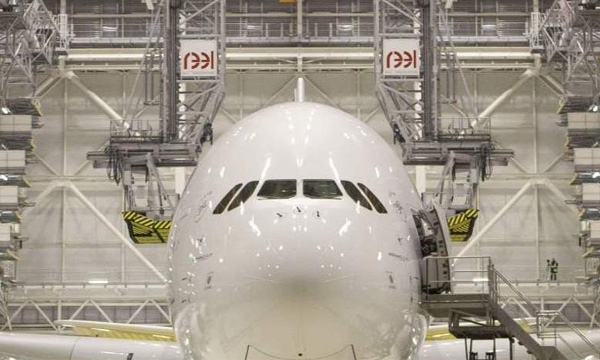François Lebailly (REEL): "We'll be busy with a lot of big projects in the Middle East" |
| Interview in Dubai by Romain Guillot |
|
|
16 MAR 2017 | 791 words
|
 |
© REEL |
|
|
|
Le Journal de l'Aviation met with François Lebailly, REEL's BL Projects & Services/Airlines Director, during the last edition of the MRO Middle East trade show, held in Dubai in February. An opportunity to discover the aerospace activities of this French industrial Group, which specialises in complex lifting and handling systems.
What are REEL's activities in aerospace?
The REEL company was set up in 1946, and we celebrated our 70th anniversary last year. It's a family company based near Lyon, with 2.000 employees worldwide who work in different sectors of activity, including aerospace. We design, manufacture, install and maintain aircraft access facilities. We have been working with Airbus, for example, on all accesses to the final assembly lines for the past twenty years. We started on the final assembly line of the A340-500/600 in Toulouse and then on the A380, and recently REEL has been entrusted with the contract for the entire final assembly line on the A350. We are also working for many airlines for which we provide all the systems to access aircraft during maintenance operations; C-Check, D-check. In addition, we are also involved in light maintenance and in Line maintenance with the supply of Ground Support Equipment (GSE) and Ground Testing Equipment (GTE). We also ensure all the maintenance of our equipment, and always have staff on call locally to respond our customers. For example, for Airbus, we have more than 200 people working full-time for the service activities.
How did you establish yourselves in the Middle East?
We established ourselves in the Middle East about 12 years ago and permanently in Dubai 5 years ago, but also in Qatar and soon in Kuwait. We have projects in all of these countries as well as in the Sultanate of Oman. With Emirates, for example, we set up the paint shop. In Doha, on the other hand, we equipped all of the maintenance facilities of the new Doha airport. We won the full project for all of Qatar Airways' Docking Systems, with heavy maintenance bays for single-aisle and wide-body aircraft up to the A380, as well as all light maintenance. We currently have a large project in Muscat for Oman Air, in the new airport, and we are also working in Kuwait where we are currently equipping eight maintenance bays. Kuwait Airways is in fact in the process of receiving its new 777-300ERs, with ten of them to be delivered next July. We were present among the major European airlines, such as Air France or British Airways, but in the last 12 years or so we have found that the Middle East has really become an important region of activity. We started with Emirates and then Qatar Airways, and now with Oman Air and Kuwait Airways, hoping soon to work with Etihad. The idea is to follow the world of the MRO, as it moves eastwards. We have also developed equipment for engine maintenance, for example at the level of the test cells or engine ferrying systems. We have worked in Hong Kong and we are present at Paris CDG with Air France. We're also working with General Electric near Cardiff. It's a complementary maintenance activity.
Will this activity related to engines be developed further?
We're trying to develop this activity more and more, particularly at the level of the large engine MRO centres. The last project was with Air France and we're also looking increasingly towards the East, because in the next ten years this is the sector that will develop very strongly in terms of maintenance.
Is the Middle East still the driver for growth for maintenance infrastructures?
This has been a little less true since last year, but during the period from 2007 to 2015, the centre of gravity was really here in the Middle East. This growth subsided a little last year and 2017 should again be relatively calm. We hope that the investments that have been put on stand-by in the region will resume as of next year. We were present on many projects that were frozen at the end of 2015 and we believe that they will resume in 2018.
Dubai is preparing for a major transition with the migration of its traffic to Dubai South during the next decade, what opportunity will this represent for you?
Yes, we're trying to position ourselves in the first projects that are starting to appear in Dubai South airport. We're located in Dubai, but also in Jebel Ali. We also hope to come to Abu Dhabi in the near future. These are the big projects for the next few years which, I hope, will keep us very busy.
|
|
 |
Romain Guillot
Chief editor
Cofounder of Journal de l'Aviation and Alertavia
|
|
| |
They made this section possible |
|
|
|
|
|
|
|
|
|
|
|
|
|
|
|
|
Top stories |
|
|
|
|
|
Top stories
|